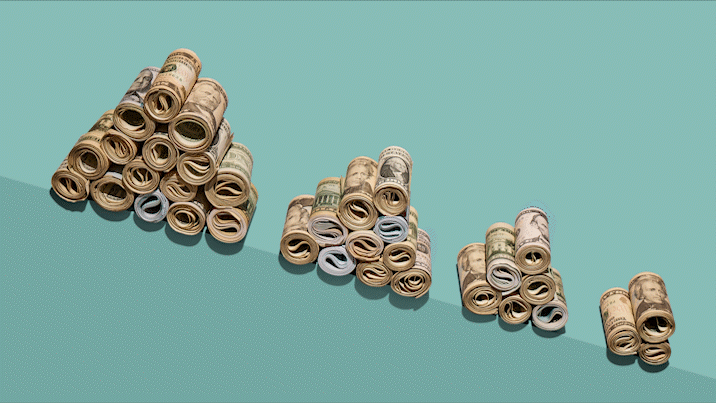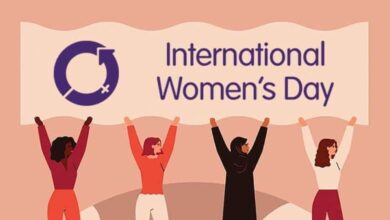How to Use the Debt Avalanche Method

If you are eager to get out of debt and have some room in your budget, consider the “debt avalanche” method. This tried and true debt payoff method can save you thousands—if you have the cash and discipline.
Along with the “debt snowball” method, the debt avalanche is one of the most popular strategies for paying off loans and credit cards fast, but most important it’s effective. Done right, this approach can help you say goodbye to your debts years earlier than you would making the minimum payments—on top of saving you on interest charges.
“In the long run, the debt avalanche approach will get you out of debt quicker than the snowball method and save more money,” says Sean Fox, president of debt solutions at Achieve, a debt resolution service provider.
Here’s everything you need to know about the debt avalanche method and how to decide if it is the right strategy for you.
What is the avalanche method of paying off debt?
The debt avalanche method targets your most expensive credit cards and loans first. You’ll start by making the minimum-monthly payment on each of your accounts. Then, you’ll allocate any extra cash toward the debt with the highest interest rate.
As an example, let’s say you have three debts:
- A credit card charging a 23% interest rate
- A personal loan charging an 11% interest rates
- A student loan charging a 6% interest rate
In this case, you would put extra money toward the credit card because it has by far the highest rate. (If you have credit card debt you’ll almost always want to start there. The average credit card APR was 20.92% in the first quarter of 2023, according to Federal Reserve data.)
Once you’ve paid off the credit card, you’d take the total amount you were paying toward it each month and add it to the minimum payment on the account with the next-highest rate. In this example, that would be the personal loan. Repeat this process with each debt until everything is paid in full.
How much time and money can you save with the debt avalanche method?
How much you can save with the debt avalanche method depends on the details of your loans including your current balances, interest rates and remaining loan terms, as well as how much extra you can pay.
Before you start, use an online calculator to see how different scenarios would play out for you. (Undebt.it and unbury.me are both great options.) Regardless of how you approach your debt, it’s crucial that you map out a plan and stick to it to see results.
As an example, let’s say you have one credit card and two loans you’d like to pay off. In total, you’re paying $915 toward your debt every month, but you have room in your budget to add another $100.
| Debt | Current balance | Interest rate | Minimum monthly payment | Time left with no extra payments |
|---|---|---|---|---|
| Credit card | $10,000 | 23% | $200 | 14 years |
| Personal loan | $3,995 | 11% | $325 | 1 year, 2 months |
| Student loan | $23,175 | 6% | $390 | 6 years |
You’ll start by putting $300 toward your credit card each month. However, while you’re working on the credit card, you’ll finish paying the personal loan with just the minimum payment. So, you’ll add that $325 to your credit card payment as well.
In this example, it will take you about 2½ years to eliminate your credit card debt. Once you’ve done that, you’ll put the full $1,015 toward your student loan until it’s paid in full a year and a few months later.
With this approach, in total you’d save over $20,000 in interest compared with making just the minimum payment, and pay off your debt nearly 10 years ahead of schedule.
Is this method right for you?
Focusing on your most expensive balances first will typically maximize your interest savings.
However, in general, the debt avalanche method only works if you:
- Have balances across several credit cards and loans
- Can afford to pay extra each month
- Can stay motivated to stick to a repayment plan
- Don’t plan on taking on additional debt—including adding to your credit card balance
However, the debt avalanche method isn’t for everyone. For some, it may be easier to stay motivated with other methods. “The avalanche method requires discipline and patience, and it may take a while to see progress,” says Leslie Tayne, founder and head attorney at New York-based Tayne Law Group.
Here are some alternatives.
The debt snowball method
With the debt snowball method, instead of focusing on your highest-rate debt first, you’ll put extra money toward your lowest balance. This strategy typically won’t save you quite as much as the avalanche method (though the difference can be small) but it can give you a psychological boost early on in the process that makes it easier to stick with it. You can also take a hybrid approach, first tackling a small loan you can payoff quickly and then moving on to higher-interest debts.
A debt-consolidation loans
If your credit is good, you may consider consolidating your debts with a personal loan. This lets you combine multiple loans into one so you can make a single, set monthly payment.
This approach can be particularly beneficial if you have high-interest credit card debt, because personal loans typically carry lower interest rates than credit cards. That said, if you have poor or fair credit, you may not be able to score a low enough interest rate to make it worth your while.
Balance transfer credit card
Balance transfer credit cards allow you to move debt from one credit card to another and pay it down at a lower interest rate—often a 0% APR—for a period of 12 to 21 months. In some cases, you may also be able to transfer balances from other types of loans. However, balance transfer credit cards may also limit how much you can transfer, so there’s no guarantee that you’ll be able to include all of your debt.
The card issuer will typically charge an upfront balance transfer fee, which may be 3% to 5% of the transferred amount. But if you’re disciplined and pay off most or all of the balance during the promotional period, you can come out ahead. If you’re not, this strategy can make it easy to revert to minimum monthly payments and racking up debt.
Credit counseling
If your budget is tight and you have trouble keeping up with your minimum payments, consider seeking out a credit counselor. A credit counselor from a nonprofit agency can offer advice for your particular situation.
They may recommend a debt management plan, which involves the counselor negotiating with your lenders to lower your interest rates and monthly payments on unsecured debts. In the end, you’ll have a three-to-five year repayment plan based on your ability to pay.
Keep in mind, though, that a debt management plan typically involves modest setup and monthly fees—work with a nonprofit agency to keep the fees low. Additionally, you may be required to close your credit card accounts, which can damage your credit score in the short term but may be worth it to get on top of you debt.
Read More



